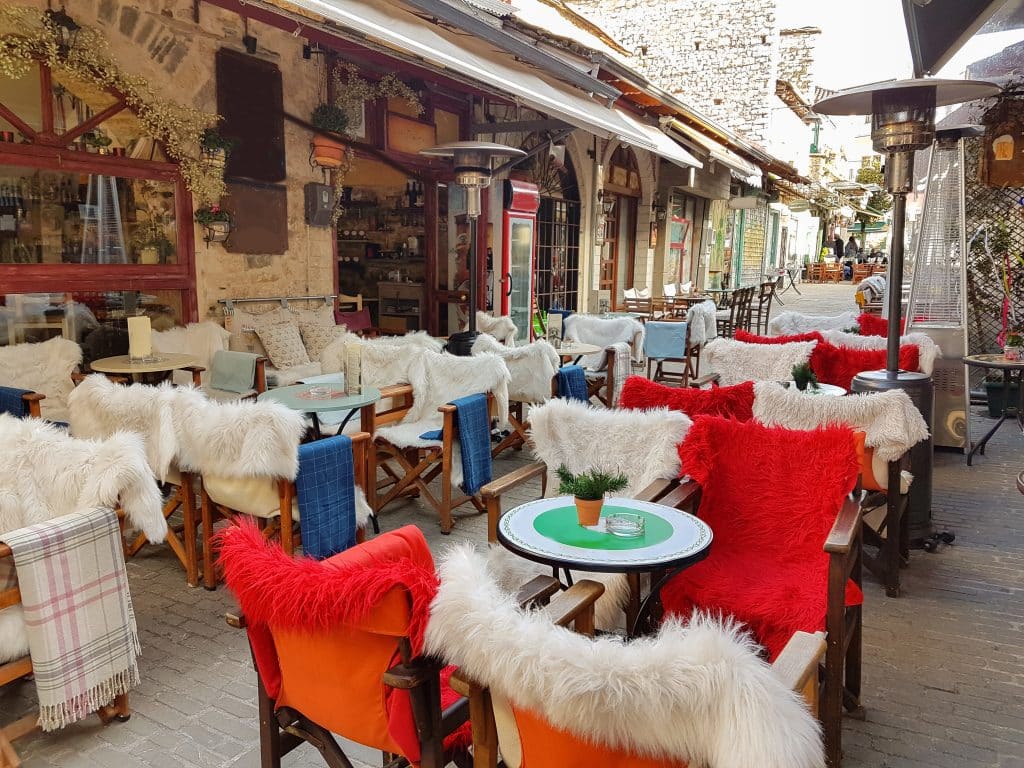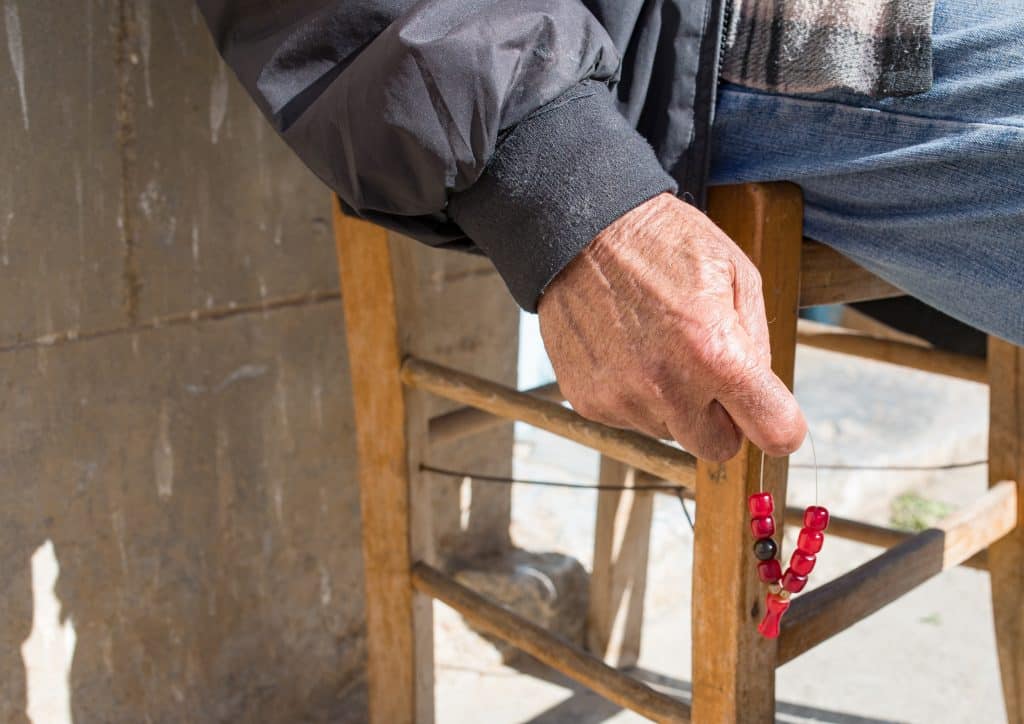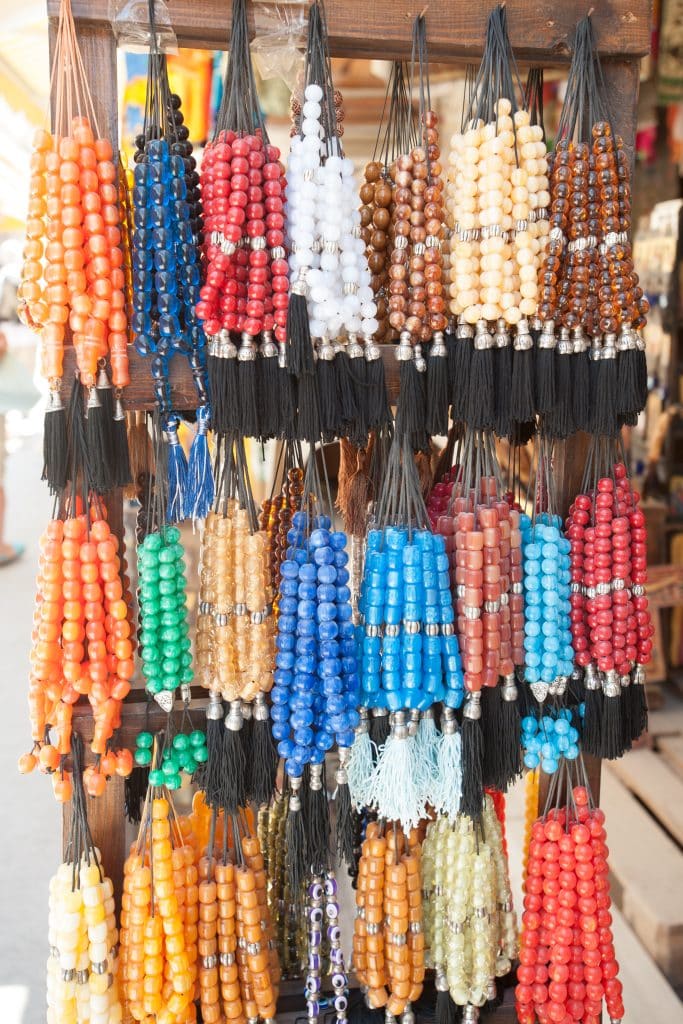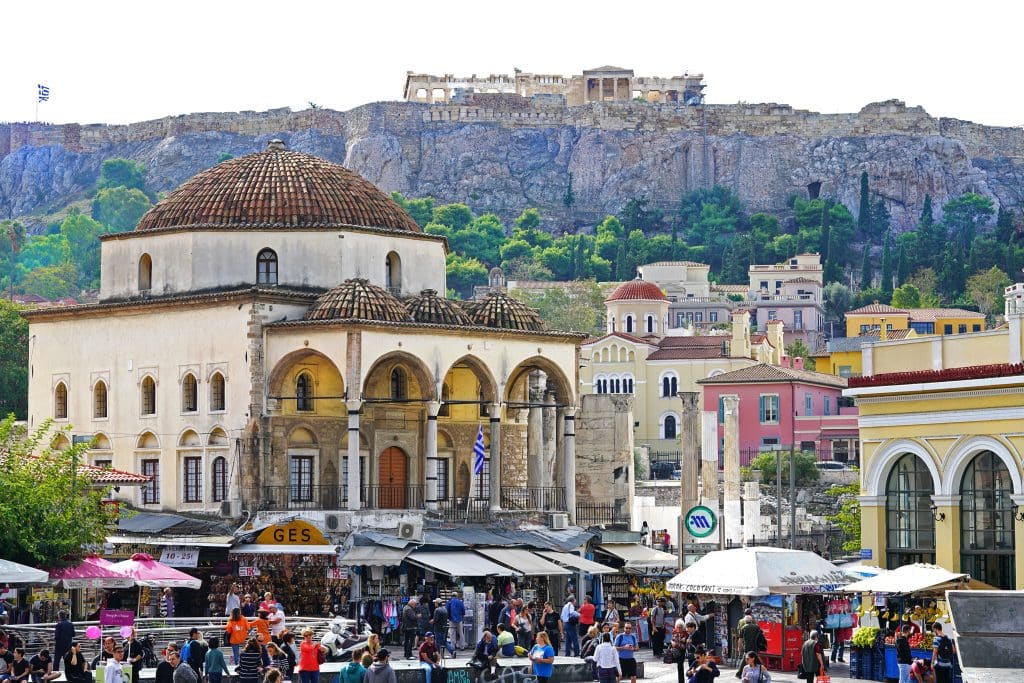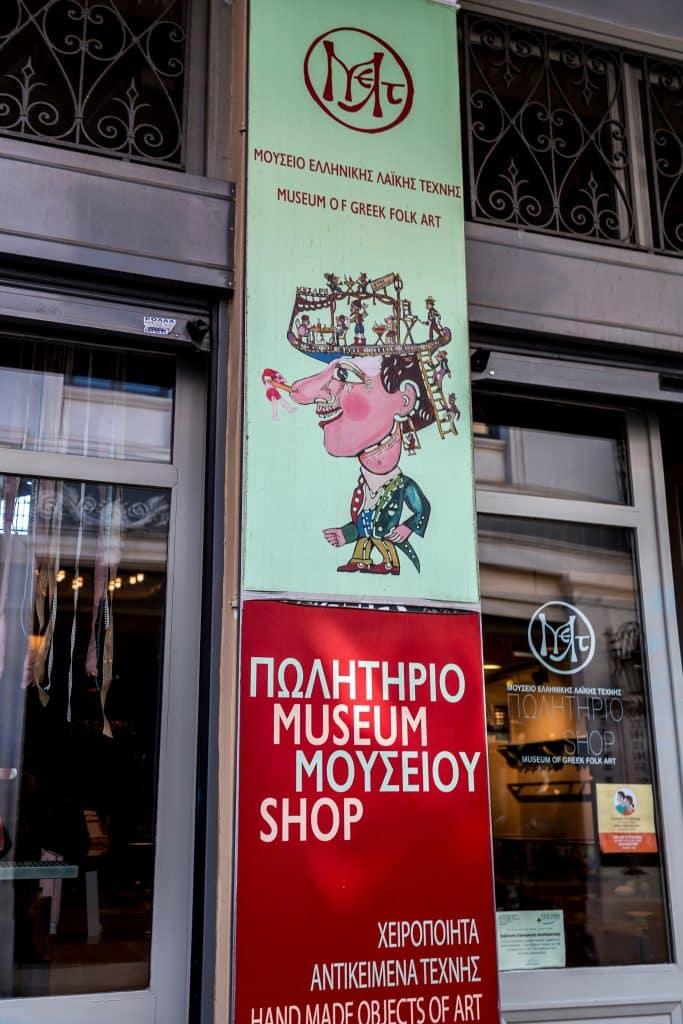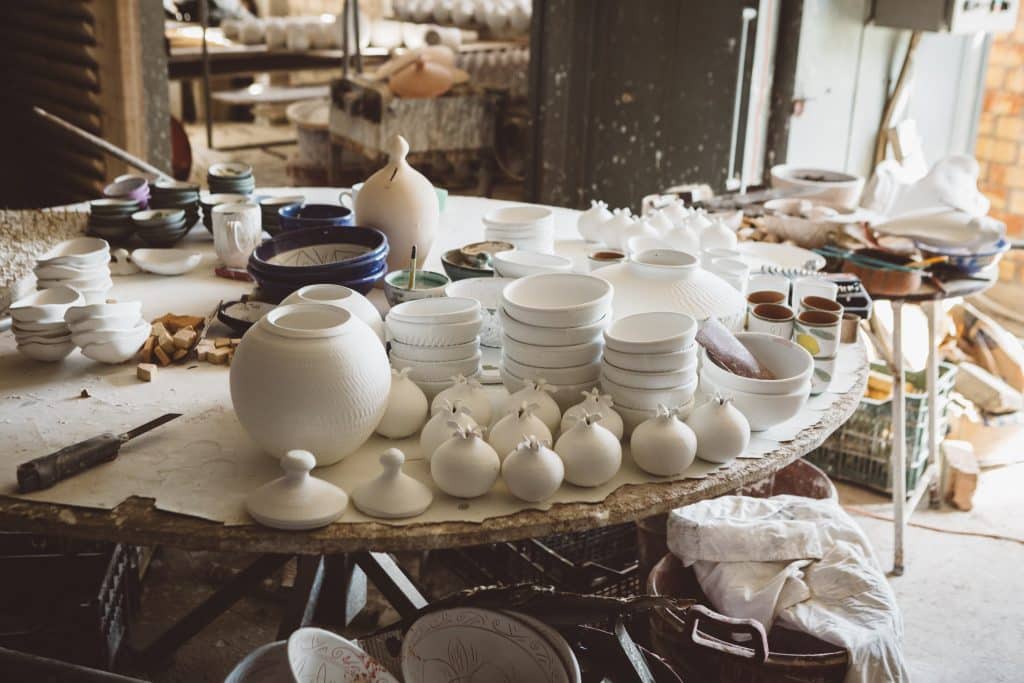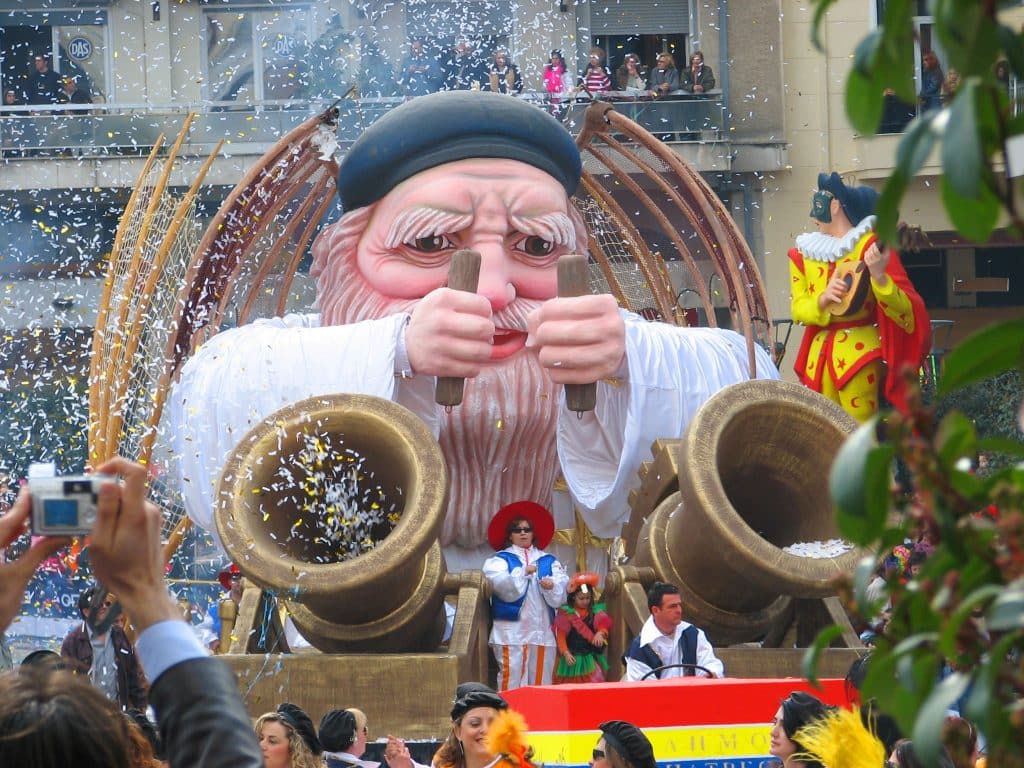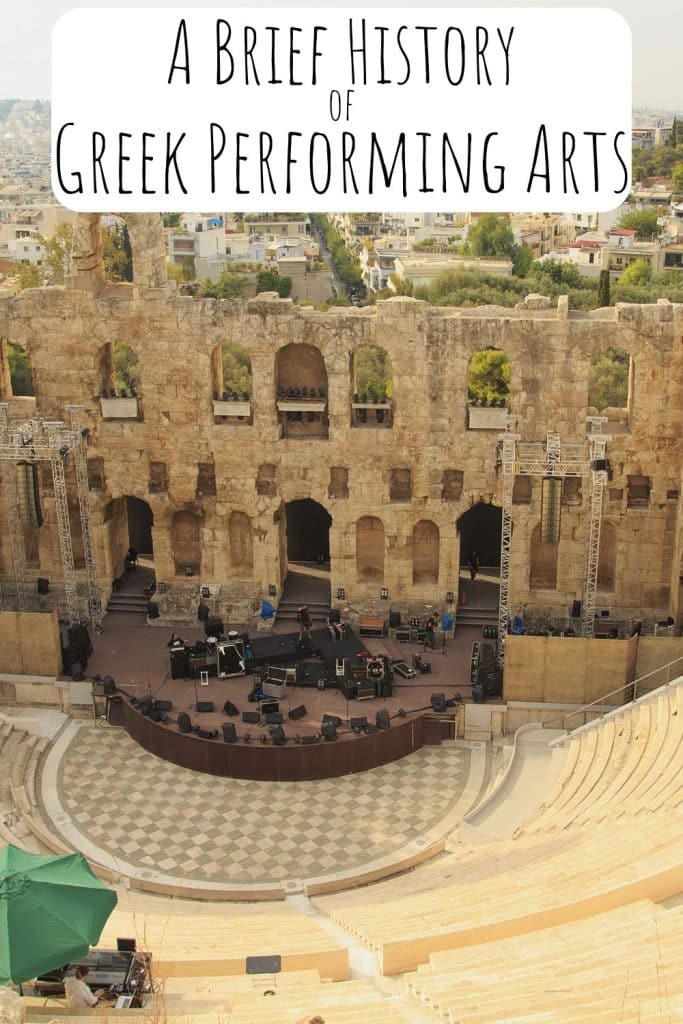A Brief History of Greek Folk Art: Greek Handicrafts and Traditional Practices
Greek handicrafts and traditional practices demonstrating Greek folk art are woven into the fabric of the country’s rich cultural heritage. From intricate weaving and textiles to the meditative ritual of worry beads, these crafts reflect the artistry, traditions, and symbolism deeply rooted in Greek culture. In this article, we delve into the cultural significance and techniques of two prominent Greek folk art handicrafts: weaving and textiles, and worry beads, also known as komboloi.
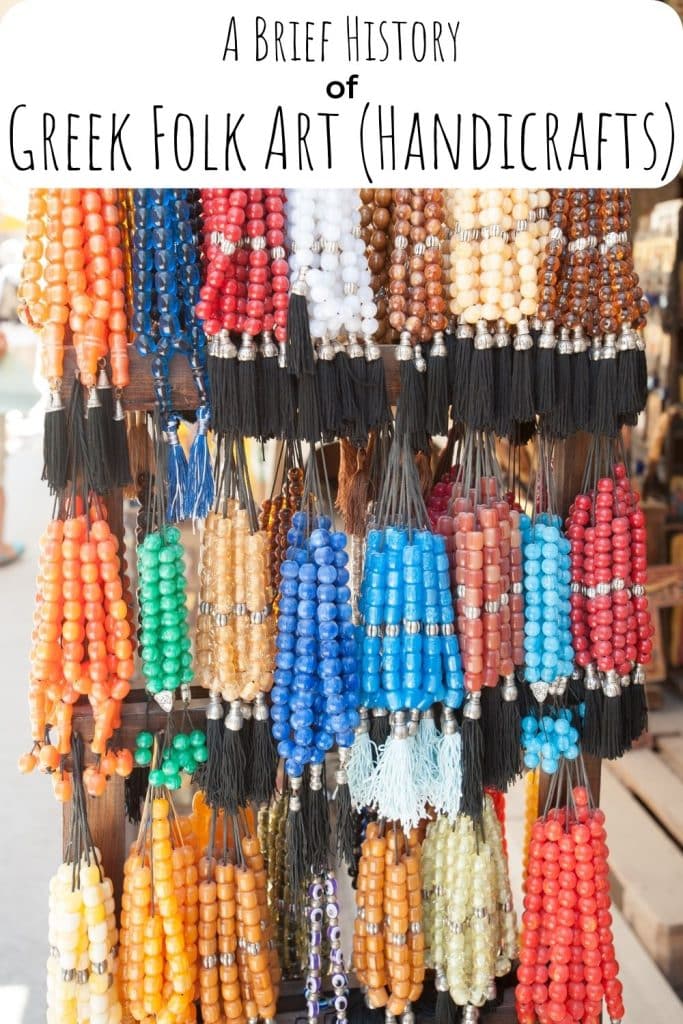
Weaving and Textiles:
Weaving has a long history in Greece, dating back thousands of years. Traditional Greek textiles are known for their exquisite craftsmanship and vibrant designs, often incorporating intricate patterns inspired by mythology, nature, and everyday life. The art of weaving is passed down through generations, preserving traditional techniques and patterns unique to different regions of Greece.
One significant example of Greek weaving is the renowned art of the “flokkati” rug. Flokkati rugs, originating from the mountainous regions of Epirus and Thessaly, are made from pure wool, carefully woven to create a dense and soft pile. These rugs are treasured for their warmth, durability, and distinctive fluffy appearance.
Another iconic Greek textile craft is the art of weaving Greek silk. Greek silk fabric is known for its luxurious texture and vibrant colors. Traditionally produced in the town of Soufli, this delicate silk is used in clothing, home decor items, and ecclesiastical vestments. Greek silk weaving has struggled as an industry due to the prominence of cheaper Chinese and Indian silks but there is a revitalization movement bringing Greek silks back to the forefront.
Worry Beads (Komboloi):
Worry beads, known as komboloi, have deep cultural and symbolic significance in Greek society. Komboloi are strands of beads, typically made from materials such as amber, coral, or wood, strung together on a string or chain. They are used as a meditative tool, providing comfort and relaxation while calming the mind.
Komboloi can be found in the hands of many Greeks, who often carry them and use them as a way to relieve stress, pass the time, or engage in contemplation. The repetitive motion of moving the beads through one’s fingers creates a soothing rhythm that helps to focus the mind and find inner peace.
Beyond their meditative purpose, komboloi also hold social significance in Greece. They are often used as a means of social interaction, with people clicking the beads together rhythmically during conversations or gatherings. Komboloi have become a symbol of Greek hospitality, as they are offered to guests as a gesture of welcome and comfort.
Greek handicrafts and traditional practices, such as weaving and textiles, and the use of worry beads (komboloi), carry a deep cultural significance in Greece. These crafts and Greek textiles reflect the country’s artistic heritage, traditions, and values, showcasing the skill, creativity, and symbolism embedded in Greek culture.
Through the art of weaving and textiles, Greek artisans preserve ancient techniques and create exquisite pieces that celebrate the beauty of Greek mythology, nature, and daily life. Each region contributes its own unique patterns and designs, making Greek textiles a true representation of the country’s diverse cultural tapestry.
Worry beads (komboloi), on the other hand, offer a meditative ritual that promotes calmness and introspection. They serve as a symbol of Greek hospitality and social interaction, connecting people through shared moments of contemplation and relaxation.
Exploring Greek handicrafts and traditional practices provides a deeper understanding of the cultural heritage and artistic expression that has shaped Greek society throughout history. Whether through the intricate weavings or the rhythmic movements of worry beads, these crafts continue to be cherished as enduring symbols of Greek identity and craftsmanship.
Where can I see these Greek handicrafts and Greek textiles in person?
To experience traditional Greek handicrafts and practices in person, here are some excellent examples of places to visit:
Monastiraki Flea Market (Athens): Located in the heart of Athens, the Monastiraki Flea Market is a vibrant marketplace where you can find a variety of Greek handicrafts, including textiles, ceramics, jewelry, and more. It’s a fantastic place to explore and discover traditional crafts while immersing yourself in the lively atmosphere of the market.
Folklore Museums: Throughout Greece, numerous folklore museums showcase traditional crafts and practices. These museums often have displays of weaving, textile production, pottery, and other handicrafts. Some notable museums include the Museum of Popular Art and Tradition in Athens, the Museum of Folk Art and Tradition of Macedonia-Thrace in Thessaloniki, and the Museum of Greek Folk Art in Athens.
Traditional Villages: Visiting traditional villages provides an authentic glimpse into Greek folk art handicrafts and practices. Places like Arachova, Metsovo, and Nafplio are known for their artisanal crafts, including weaving, wood carving, and ceramics. Walking through the narrow streets of these villages, you can explore local workshops and artisans’ studios, where you can witness traditional craftsmanship firsthand.
Delphi Handmade (Delphi): Delphi Handmade is a cooperative of artisans located in Delphi. Here, you can find high-quality Greek handicrafts, including textiles, ceramics, jewelry, and leather goods. The cooperative focuses on promoting traditional craftsmanship and supporting local artisans, making it an excellent place to see and purchase authentic Greek crafts.
Artisan Workshops: In various cities and towns across Greece, you can find artisan workshops where traditional crafts are practiced. These workshops often offer guided tours and demonstrations, allowing you to observe skilled artisans working on weaving looms, pottery wheels, or intricate jewelry-making techniques. Some workshops even provide hands-on experiences, allowing visitors to try their hand at these crafts under expert guidance.
Cultural Festivals: Attending cultural festivals and events is a great way to witness traditional Greek handicrafts and practices. Festivals such as the Athens Epidaurus Festival, the Patras Carnival, and local folk festivals often feature craft exhibitions, artisan demonstrations, and performances showcasing traditional music and dance. These events provide a comprehensive experience of Greek culture, including its crafts and artistic expressions.
In conclusion, exploring the cultural significance and techniques of Greek handicrafts and traditional practices unveils a world of artistry, symbolism, and heritage. From the intricate weavings and vibrant textiles to the soothing rhythm of worry beads (komboloi), these crafts embody the essence of Greek culture.
To truly immerse yourself in the beauty and craftsmanship of Greek handicrafts, plan a visit to Greece and explore the bustling markets, folklore museums, traditional villages, and artisan workshops. Witness firsthand the skill and dedication of artisans as they create exquisite pieces, keeping ancient techniques alive.
Beyond experiencing these crafts in person, you can also support Greek artisans and craftsmen by purchasing their creations. By acquiring a piece of Greek handicraft, you not only bring a unique and meaningful item into your life but also contribute to the preservation of these traditional practices for future generations.
To learn about Greek visual arts, check out this brief history.
And a brief history of Greek performing arts can be found here.
